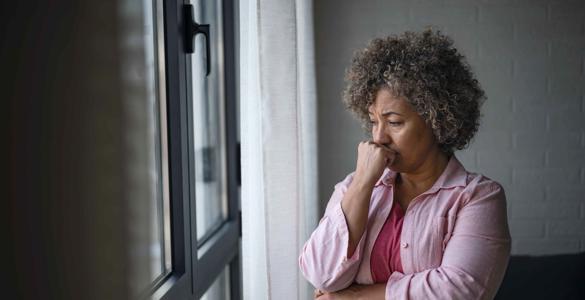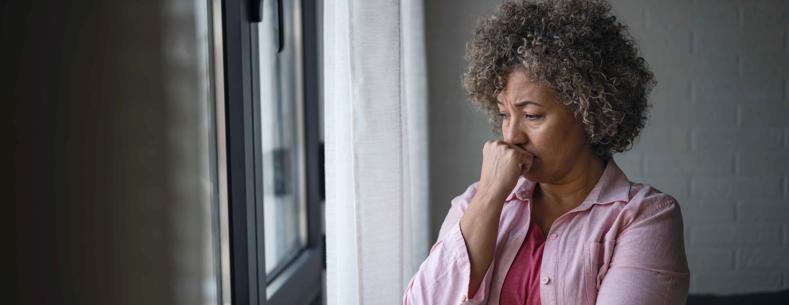Violence against women and girls transcends geographical boundaries, cultural divides, and economic statuses. A woman’s life is tragically lost to male violence every three days in the UK, with one in four women enduring some form of domestic abuse in their lifetime.
The UK Government ratified the Council of Europe Convention on Preventing and Combating Violence against Women and Domestic Violence (‘the Istanbul Convention’) in July 2022. As such, the UK and Welsh Governments are now bound by international law to protect women and girls from violence.
In preliminary findings following an official visit to the UK, Special Rapporteur to the United Nations, Reem Alsalem noted:
Entrenched patriarchy at almost every level of society, combined with a rise in misogyny that permeates the physical and online world, is denying thousands of women and girls across the UK the right to live in safety, free from fear and violence,
The Special Rapporteur emphasised the UK's leading role in strengthening its legal framework against violence towards women and girls, with the UK-wide framework “complemented by important legislation and policies” in the devolved nations. However, she added a significant gap between policy and implementation was impeding the UK and devolved administrations’ efforts to fully address this issue.
The gap between policy and implementation is attributed to several factors, including entrenched patriarchy and a rise in misogyny, affecting both physical and online spaces. The UK’s position on international human rights, especially concerning migrants is also cited.
Our article, ‘Making Wales a safe place to be a woman’ confronts the harsh reality that women and girls are disproportionately affected by various forms of violence; from physical abuse and sexual assault to emotional manipulation and harassment.
As Members of the Senedd prepare for a Plenary debate the issue (on 8 May), this article looks at the actions needed to ‘halt this epidemic’ and how progress can be measured.
The Committee’s report: addressing the "epidemic"
The Senedd Equality and Social Justice Committee’s report identified some actions needed to improve the safety of women and girls in Wales.
Figure 1 – Key steps in protecting women and girls from violence – identified in the Equality and Social Justice Committee report

(Source: Senedd Research)
Measuring progress
The Welsh Government has several strategies and laws to address gender-based violence. This includes its strategy Violence against Women, Domestic Abuse, and Sexual Violence Strategy 2022-2026. This overarching strategy sets out the objectives that the Welsh Government will achieve in partnership with stakeholders.
It aligns with the purpose of the Violence against Women, Domestic Abuse, and Sexual Violence (VAWDASV) (Wales) Act 2015 and has six key objectives which focus on prevention, support for survivors and cultural change
Under Section 11(1) of the VAWDASV (Wales) Act 2015, the Welsh Ministers are mandated to publish national indicators for measuring progress towards the Act's objectives. These indicators must undergo regular review and revision.
The current national indicators for assessing progress relate to the Welsh Government’s previous strategy (they were adopted in 2019).
The 2022-2026 strategy extends the scope to include street and workplace harassment and emphasises that women’s safety will come from changing the culture that fails to tackle toxic masculinity. These new areas of focus will require additional or updated indicators to accurately measure progress.
A task group has been established to review the national indicators. The Welsh Government say work is underway:
- to identify ways to ensure that the lived experience of people is captured;
- analytical plans are being developed to meet wider evidence needs; and
- a mapping exercise is underway to identify sources of data.
The Equality and Human Rights Commission in Wales has called on the Welsh Government to promptly introduce new indicators to track the implementation of its VAWDASV strategy. They say the Welsh Government must prioritise transparency and accountability by providing comprehensive progress reports.
The data landscape
The Welsh Government say the revised indicators are being developed in consultation with stakeholders and experts in the field. They say they are focused on ensuring the data for these indicators can be reliably and ethically collected.
Based on the expanded scope of the VAWDASV strategy for 2022-2026, some potential new indicators that could be considered include, reported incidents of street and workplace harassment. The Equality and Social Justice Committee’s report emphasised the importance of improved understanding of the proportion of services that are accessible to individuals with disabilities, or that offer support in multiple languages, as well as the percentage of professionals who report increased confidence in handling VAWDASV cases after training.
It’s also worth noting efforts being made by the Office for National Statistics to compile a dataset of various data sources on violence against women and girls, covering different forms of abuse like domestic violence, sexual assault, and forced marriage.
Figure 2: The latest figures on the violence against women dashboard for England and Wales
|
The latest figures on the VAWDASV dashboard show that in England and Wales in the year ending March 2022:
There were also 1,194 sexual exploitation referrals to the national referral mechanism in the UK in the year ending December 2018. In addition to the figures published on the dashboard, data recorded by the police shows:
|
Neither the Welsh Government’s national strategy, or annual progress report includes Wales-specific data.
Wales could become the safest place to be a woman
The Welsh Government’s strategy aims to make Wales the safest place to be a woman.
The Equality and Social Justice Committee’s report says this is undoubtedly a challenging task but not entirely unrealistic.
It says governments can make significant strides towards this goal by implementing comprehensive strategies, investing resources, and prioritising the safety and well-being of women and girls.
While no country has fully achieved this, several nations have made notable progress and serve as examples of what can be accomplished with concerted effort and commitment.
Figure 3: International examples
|
Iceland: Iceland consistently ranks at the top of global gender equality indices and is often cited as one of the safest countries for women. Its government has implemented a strategy called “Generation Equality Forum” to address gender-based violence. Sweden: Sweden has a strong legal framework and support services for survivors of gender-based violence. The Swedish government has implemented stringent legal penalties for perpetrators, alongside public awareness campaigns and specialised support services. Norway: Norway has made significant strides in promoting gender equality and combating violence against wome It has a National Action Plan: Women, Peace and Security (2023-2030). New Zealand: New Zealand has implemented innovative approaches to address gender-based violence, including the introduction of a 25-year strategy to eliminate family violence and sexual violence. Canada: Canada has a gender-based violence strategy focused on investing in prevention initiatives, support services, and legal reforms to protect the rights and safety of women and girls. |
While these countries have made progress, violence against women and girls persists across the globe. But they show achieving the ambition of making any country the safest place in the world for women and girls is possible.
|
The Welsh Government’s 24/7 Live Fear Free helpline provides help and advice about violence against women, domestic abuse and sexual violence. Call 0808 80 10 800 |
Article by Sarah Hatherley, Senedd Research, Welsh Parliament






